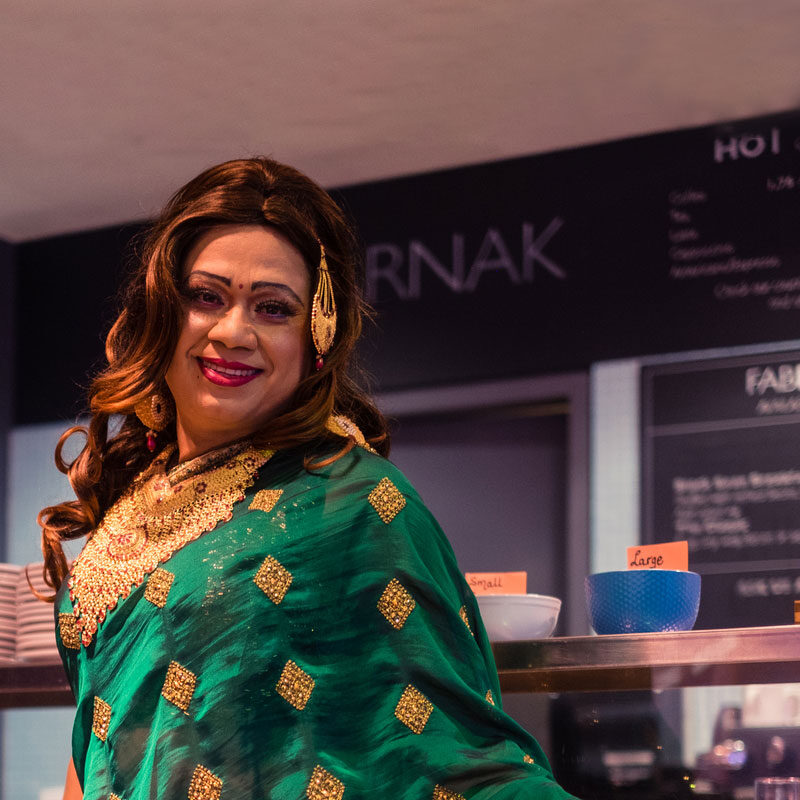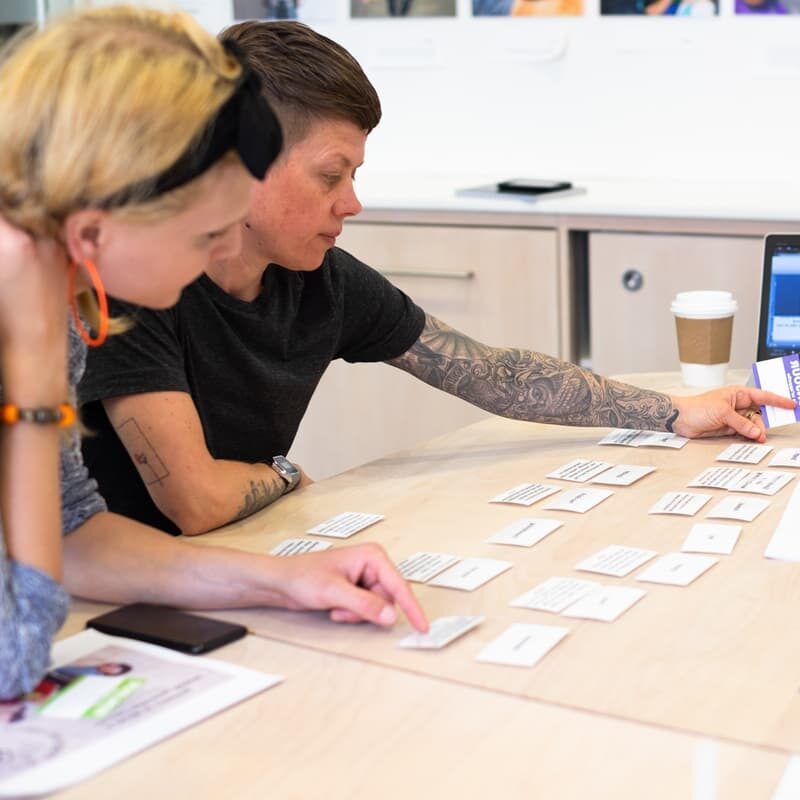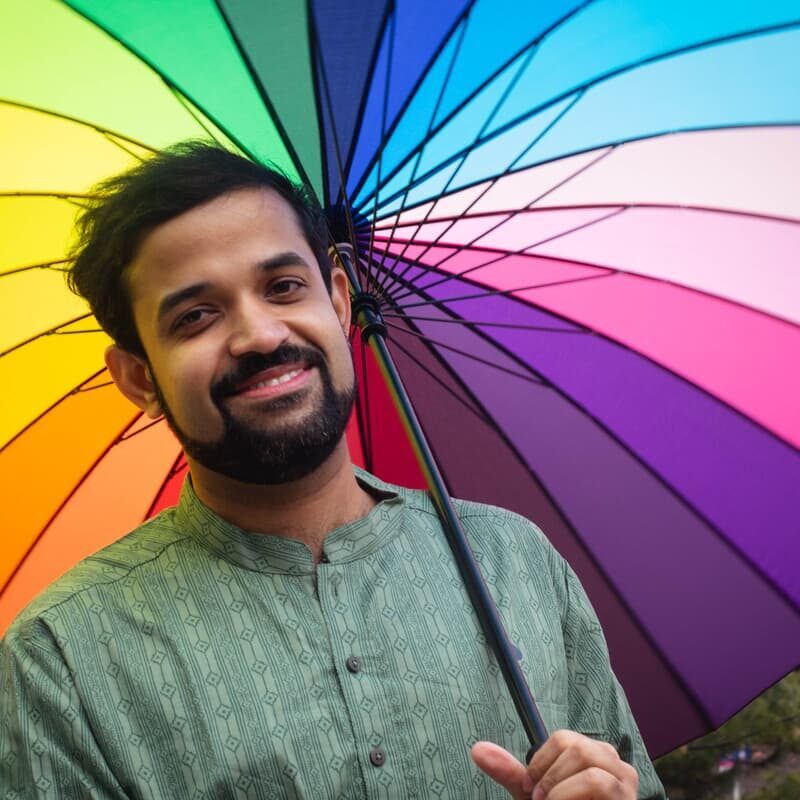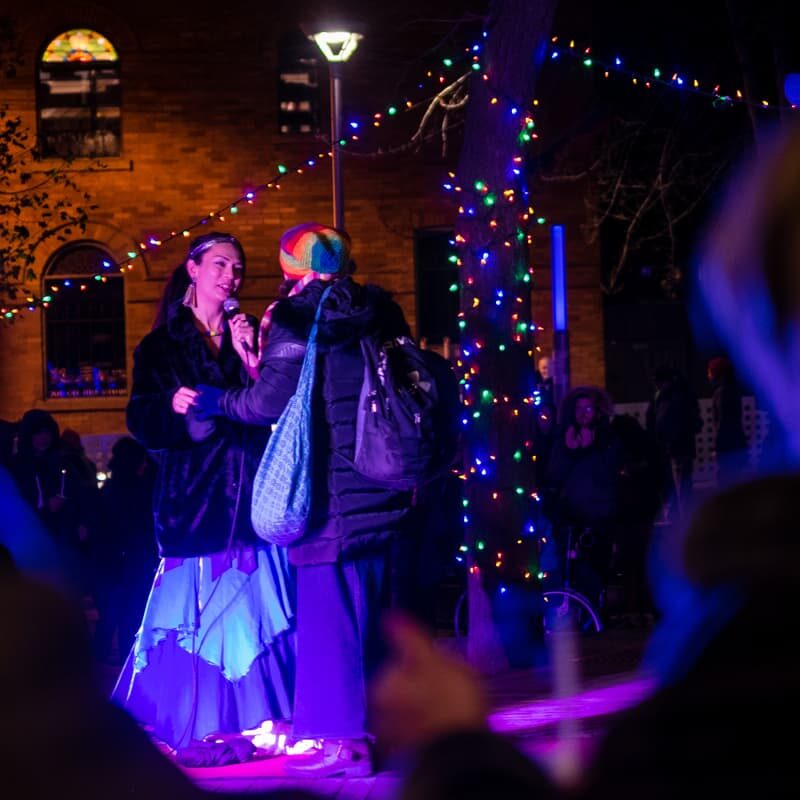Focus on: Covering Trans and Non-binary Communities
Best practices for reporting on trans and non-binary folks.

Introduction
Like everyone, trans and gender-diverse people face a multitude of challenges, have daring dreams, and complete lives. Fair and accurate reporting on these communities reflects this full range of human experience.
As a best practice, a person’s gender identity should not be disclosed unless relevant to the story, or if the person you interviewed has explicitly asked that you bring their identity forward. There are many reasons for this: Someone might not be out, it could put them in danger or make them a target of online hate, or they simply don’t want it mentioned.
If a person gives you permission to mention their trans or gender-diverse identity, avoid making it the focus of the story. This would be like centering a piece entirely on a person’s age, race, or religion. It’s a different case when the story does, in fact, pertain to a person’s identity. For example, a human-interest story about a politician who is transitioning while in office.
While these descriptors influence someone’s life, they tell you very little about who a person is. For example, you would never assume that two cisgender men are the same, so why make that assumption with two trans men? Reporting should instead focus on all the other important things a person is saying and doing.
How someone talks about their identity is personal and complex. There’s no single description that can be easily applied from one situation to the next. If someone identifies using a term you’ll have to explain in your story, ask them to describe what it means in their own words. Let this inform how you mention their gender identity rather than falling back on the general definitions below.
The Ontario Human Rights Code and Bill C-16
In 2012, gender identity and gender expression were added as protected characteristics in the Ontario Human Rights Code.
Bill C-16 was passed in 2017. This federal legislation added gender identity or expression to several key pieces of Canadian human rights law. Gender identity and expression are now prohibited grounds for discrimination under the Canadian Human Rights Act and are included in two sections of Canada’s Criminal Code.
A Quick Note: Gender Identity ≠ Sexual Orientation
Gender identity and sexual orientation are separate spectrums. There are so many identities within each, which makes reporting on these communities both unique and complicated. One doesn’t tell us anything about the other.

Key Terms For Covering Trans and Non-Binary Communities
These descriptions have been pulled from The 519’s Glossary of Terms. The glossary is by no means an exhaustive list of definitions related to our communities, but it has been carefully crafted to aid in the facilitation of shared understandings around equity, diversity, inclusion, and awareness. However, it’s always best to ask people what words they use and how they define them.
“When it comes to communities and identity politics, the guiding principle for journalists should be ‘let’s reflect the language that people are using to talk about their lived experience,’ because no one understands it better than they do.”
- Dean Lobo (he/him), former journalist and Communications Coordinator at The 519

Reporting Do’s
Follow someone’s language lead. Listen and use those same words.
Get consent before sharing someone’s gender identity and pronouns in a story.
Use “trans” as an adjective to describe something about someone. For example, Sofi is a bold trans woman.”
Reporting Dont’s
Assume someone’s gender identity based on how they look or act. For example, people who cross dress and/or do drag don’t necessarily identify as trans.
Ask a question you would not ask a cisgender person.
Say that someone is “transgendered,” “a transgender,” or “a trans” as a noun.
Common Scenarios
Scenario #1: Misgendering
A person has been misgendered in a story or during your interview.
Misgendering happens when a person is referred to using an incorrect set of pronouns or when incorrect gendered language is used. For example, if a trans man is repeatedly referred to as a woman.
Misgendering is hurtful. It can mock or invalidate a person’s gender identity and make someone feel belittled or insulted. It ignores someone’s personal experience in favour of established worldviews and social norms.
What to do
To avoid misgendering someone, always ask a person which pronouns they want you to use (in conversation with them and for your story). Be careful to not make assumptions based on visual shortcuts like clothing, hair style, body language, and voice. Gender identity runs deeper than physical appearance and mannerisms. It is best practice to ask everyone you are interviewing, regardless of your assumptions, what their pronouns are.
If you misgender someone in conversation, correct yourself and move on. There is no need to dwell on the error or make things awkward.
If you have misgendered someone in a story, apologize and make amends. This could mean a personal phone call to the source where you apologize for the mistake and share how you plan to avoid a similar situation in the future. For stories online, update someone’s pronouns or other incorrect assumptions that have been made. For stories in print, we suggest issuing a correction in the next day’s paper.

Other Reporting Tips
Include a diversity of trans and gender-diverse voices and experiences in your reporting (see section below).
Interview trans people in a story about trans issues or rights. This is an obvious tip that is too often overlooked. Highlight those trans sources rather than relegating them to the end of a story after other “experts” on trans issues.
Understand the risks and dangers that could come from outing someone without their consent. This includes through names, visuals, and the wrong use of pronouns.
Look critically at how people are identified in police briefs. There is a history of misgendering so your own supplementary research might be needed to accurately report someone’s gender identity. See the Crime, Violence, & Law page for more.
Further Context
These sections provide further context about the nuances of reporting on Trans, Non-Binary and Gender Diverse communities.
Resources
Creating Authentic Spaces
A gender identity and gender expression toolkit created by The 519 to support the implementation of institutional and social change. Available in English, French, and Spanish.
A statistical portrait of Canada's diverse LGBTQ2+ communities
The latest Statistics Canada data includes helpful contextual information and data points to use in stories.
Visit website
Open A statistical portrait of Canada's diverse LGBTQ2+ communities in a new tab
Egale Canada
Egale is Canada’s leading organization for 2SLGBTQI people and issues. Their site contains research, education, awareness, and advocacy resources.
Have you come across an article that got it wrong? We want to know.
Report an article and hold publications accountable for fairly & inclusively reporting with our communities.